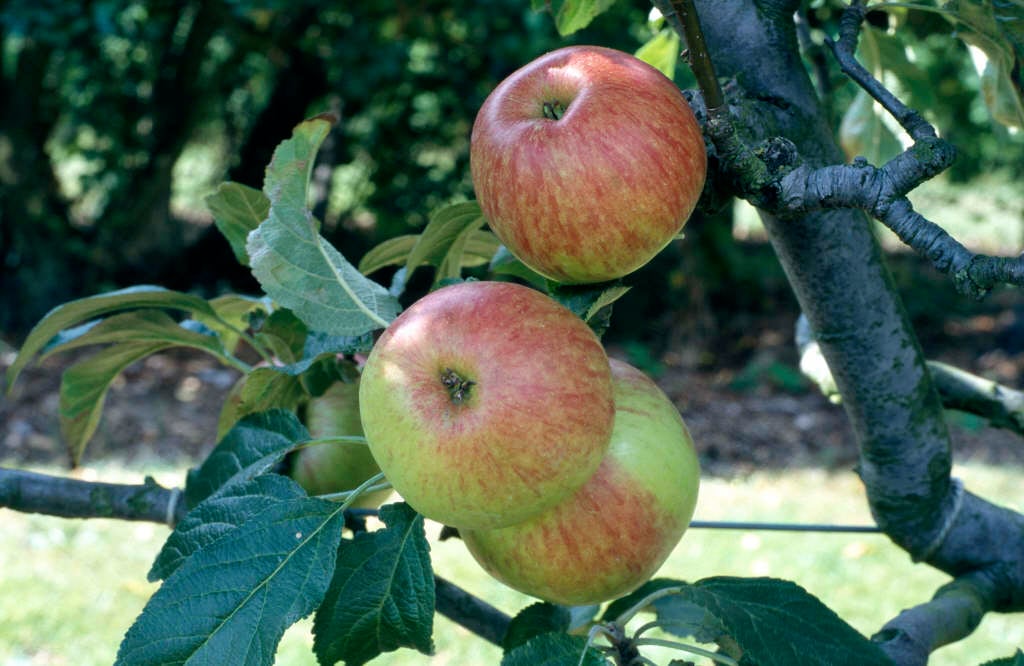Malus domestica 'Laxton's Fortune' (D)

apple 'Laxton's Fortune'
'Laxton's Fortune' is a dessert apple that can grow to 2.5-8m in height and width, depending on the rootstock. Pale pink flowers, pollination group 3. Prone to biennial bearing

Buy this plant
Size
Ultimate height
4–8 metresTime to ultimate height
5–10 yearsUltimate spread
4–8 metresGrowing conditions
Moisture
Moist but well–drained, Well–drainedpH
NeutralColour & scent
| Stem | Flower | Foliage | Fruit | |
| Spring | Pink | Green | ||
|---|---|---|---|---|
| Summer | Green | |||
| Autumn | Green | Green Red | ||
| Winter |
Position
- Full sun
Aspect
South–facing or East–facing or North–facing or West–facing
Exposure
Sheltered Hardiness
H6Botanical details
- Family
- Rosaceae
- Native to GB / Ireland
- No
- Foliage
- Deciduous
- Habit
- Bushy
- Genus
Malus are small to medium-sized deciduous trees with showy flowers in spring and ornamental or edible fruit in autumn; some have good autumn foliage colour
- Name status
Accepted
- Horticultural Group
- Dessert apples are sweet and juicy and are best eaten fresh and raw
How to grow
Cultivation
Suitable for all training forms. Keep a clear area around the trunk of at least 60cm radius - apple cultivation. Thin fruit as required
Propagation
Propagate by chip budding or grafting onto a clonal rootstock for fruit. The rootstock used will largely determine the size of the tree
Suggested planting locations and garden types
- City and courtyard gardens
- Cottage and informal garden
- Patio and container plants
- Wildlife gardens
- Edible fruit
Pruning
Regular pruning required - see apple pruning; spur bearing
Pests
May be susceptible to aphids, including woolly aphid and rosy apple aphid, fruit tree red spider mite, codling moth and other caterpillars
Diseases
May be susceptible to apple canker, apple scab, blossom wilt, brown rot, fireblight, honey fungus and powdery mildews
Get involved
The Royal Horticultural Society is the UK’s leading gardening charity. We aim to enrich everyone’s life through plants, and make the UK a greener and more beautiful place.